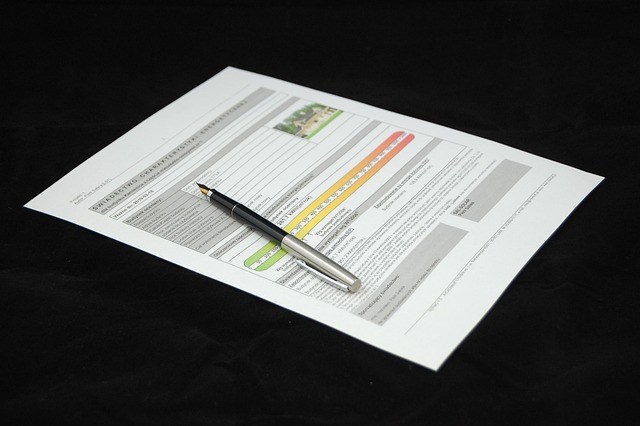UK Children's Literature Translation Services play a vital role in bridging cultural gaps while preserving the enchanting tone and storytelling magic of children's literature. They navigate complex challenges, from idiomatic expressions to cultural references, by immersing themselves in the source text and employing creative strategies. Their goal is to create translations that resonate with UK young readers while connecting them to global audiences. Quality Assurance processes ensure accuracy and maintain the integrity of the original work. Combining advanced machine translation tools with human expertise, these services deliver captivating stories that cater to diverse readerships worldwide, shaping the future of UK children's literature globally.
In the vibrant world of children’s literature, maintaining original tone during translation is paramount. This comprehensive guide explores the intricacies of preserving emotional resonance and authorial intent across languages, focusing on the unique demands of the UK market. From understanding cultural nuances to choosing the right translation team, we delve into strategies for success. Discover how quality assurance checks, case studies, and innovative tools enhance precision, ensuring that UK Children’s Literature Translation Services remain true to the original spirit of these beloved stories.
- Understanding Tone in Children's Literature
- The UK Market and Its Unique Demands
- Challenges of Preserving Original Tone
- Cultural Nuances and Idiomatic Expressions
- Choosing the Right Translation Team
- Quality Assurance Checks for Tone Consistency
- Case Studies: Successful Tone Maintenance
- Tools and Technologies for Precision Translation
- Future Trends in Children's Literature Translation
Understanding Tone in Children's Literature

Maintaining tone in children’s literature is a delicate task, especially when translating for a new audience. UK Children’s Literature Translation Services understand that the essence of good children’s literature lies not only in accurate word-for-word translation but also in capturing and conveying the original tone and spirit. This involves recognizing and replicating the author’s use of humor, whimsy, or pathos, ensuring that young readers in the UK connect with the story just as their counterparts abroad do.
The tone in children’s literature often reflects the cultural nuances and values of its origin, making it a key element to preserve. Translators must be sensitive to these subtleties while adapting the work for a new cultural context. They achieve this by immersing themselves in the source text, understanding the author’s intent, and employing creative strategies such as choosing appropriate idiomatic expressions or playfully rephrasing to maintain that original charm.
The UK Market and Its Unique Demands

The UK market for children’s literature is a vibrant and highly competitive space, with a unique set of demands when it comes to translation services. This sector caters to a diverse range of readers, from young toddlers to teenagers, each with their own distinct preferences and reading levels. Therefore, translation must not only capture the intricate nuances of language but also consider age-appropriate content, tone, and style.
UK children’s literature publishers often seek translations that resonate with both British culture and values, ensuring that stories maintain their original charm while appealing to local readers. This requires a deep understanding of the target audience and an ability to adapt text without losing its essence. Professional translation services specializing in UK Children’s Literature must be adept at navigating these unique challenges to provide high-quality, culturally sensitive translations.
Challenges of Preserving Original Tone

Maintaining original tone in translations, especially in children’s literature, presents unique challenges. When translating texts intended for young audiences, it’s crucial to preserve not just the meaning but also the emotional resonance and stylistic nuances that contribute to the overall reading experience. UK Children’s Literature Translation Services face the task of accurately conveying these elements across languages while adapting them to the target culture, ensuring the translated work resonates with children in a natural and engaging way.
One significant challenge is capturing the subtleties of humor and wordplay, which often lose their impact when translated. Cultural references and idioms also require careful handling as they might not translate directly and could potentially alienate young readers if not adapted thoughtfully. Moreover, maintaining the rhythm and cadence of the original text—crucial elements in poetry and rhyming stories—is paramount to keeping the narrative flow and memorability intact for UK children’s literature readers.
Cultural Nuances and Idiomatic Expressions

When translating UK children’s literature, cultural nuances and idiomatic expressions play a pivotal role in preserving the original tone. These elements are integral to the storytelling process, shaping how characters interact and the overall atmosphere of the narrative. Direct translation often fails to capture these subtleties, which can lead to a loss of cultural context for readers. For instance, British humor and slang might not translate well into other languages, potentially altering the intended comedic effect or even causing confusion.
Professional UK children’s literature translation services understand these challenges. They employ translators who are native speakers or have deep insights into the target culture. These experts navigate idiomatic expressions, ensuring they’re conveyed in a way that resonates with young readers worldwide while maintaining the essence of the original story. This careful approach guarantees that cultural nuances are not only respected but also effectively communicated across languages.
Choosing the Right Translation Team

When it comes to translating UK children’s literature, selecting the ideal team is paramount to preserving the original tone and essence of the work. The right translation team should possess a deep understanding of both the source language and the cultural nuances embedded in children’s literature. Experts in this field often have a keen eye for detail, ensuring that the translated text flows naturally while capturing the intended audience’s attention.
Look for teams with experience in UK children’s literature translation services, who can adapt to various genres, from fairy tales and fables to educational texts and fantasy novels. A diverse pool of translators, language specialists, and editors can contribute unique perspectives, ensuring an accurate and engaging translation that resonates with young readers.
Quality Assurance Checks for Tone Consistency

In the realm of UK children’s literature translation services, maintaining original tone is paramount to ensure engaging and age-appropriate content for young readers. Quality Assurance (QA) checks play a pivotal role in achieving this consistency. Beyond mere linguistic accuracy, these checks involve scrutinizing the translated work for adherence to cultural nuances, literary devices, and the author’s unique voice.
Specialised translators and editors conduct rigorous QA processes that include back-translation, comparison with source material, and peer reviews. This meticulous approach ensures that the translation not only conveys the meaning but also captures the essence of the original text, be it a fanciful adventure or an educational narrative. By implementing these stringent measures, UK children’s literature translation services safeguard the integrity of stories that have the power to captivate young minds.
Case Studies: Successful Tone Maintenance

In the realm of UK children’s literature translation services, maintaining original tone is paramount to preserve the essence and charm that captivate young readers. Case studies of successful translations highlight the delicate balance between linguistic accuracy and artistic fidelity. For instance, when translating a whimsical tale with playful puns and vivid imagery, translators must not only render the meaning but also capture the rhythm and humor inherent in the source text. By employing creative equivalents and adapting phrasing, they ensure that the translated work resonates just as strongly with UK children’s audiences.
Another compelling example involves adaptations of classic fairy tales, where tone maintenance becomes even more critical. Translators must tread carefully to preserve the original moral, while also updating language and cultural references to make the story relatable for modern young readers. By studying the source culture and employing sensitive word choices, successful translations of these timeless tales have enriched UK children’s literature, showcasing that tone is not just a matter of words but a vital component of storytelling magic.
Tools and Technologies for Precision Translation

In the realm of UK Children’s Literature Translation Services, staying true to the original tone is paramount. Tools and technologies play a pivotal role in achieving this precision. Advanced machine translation (MT) platforms, such as those employing neural networks, have significantly improved accuracy and fluency in children’s literature translations. These tools consider context, idiomatic expressions, and cultural nuances, ensuring that the translated text resonates with young readers just as the original did.
Moreover, human post-editing is an indispensable step. Professional translators fine-tune machine-translated texts, preserving the author’s intended tone, style, and rhythm. This blend of technology and human expertise guarantees that UK Children’s Literature Translation Services deliver works that are not only linguistically precise but also captivating for young audiences worldwide.
Future Trends in Children's Literature Translation

The future of UK children’s literature translation services looks bright, with several emerging trends shaping the industry. One notable trend is the increasing demand for more diverse and inclusive translations that reflect the cultural richness of various global markets. Publishers are recognizing the importance of representing different ethnicities, gender identities, and abilities in translated literature to ensure relevance and appeal among young readers worldwide.
Additionally, advancements in technology are playing a significant role. Machine translation tools have improved dramatically, enabling faster and more cost-effective translations while still maintaining quality. However, human translators remain indispensable for their expertise in capturing nuances, literary devices, and cultural subtleties, ensuring that the original tone and intent of the story are preserved across languages.
Children’s literature, as a vibrant and imaginative genre, requires meticulous attention when translating into new languages, especially for the UK market. By understanding tone, cultural nuances, and choosing the right translation team, we can preserve the original essence of stories that captivate young minds worldwide. Advanced tools and technologies play a crucial role in ensuring consistency, making UK Children’s Literature Translation Services an indispensable asset for publishers aiming to reach global audiences while maintaining quality and tone integrity.
